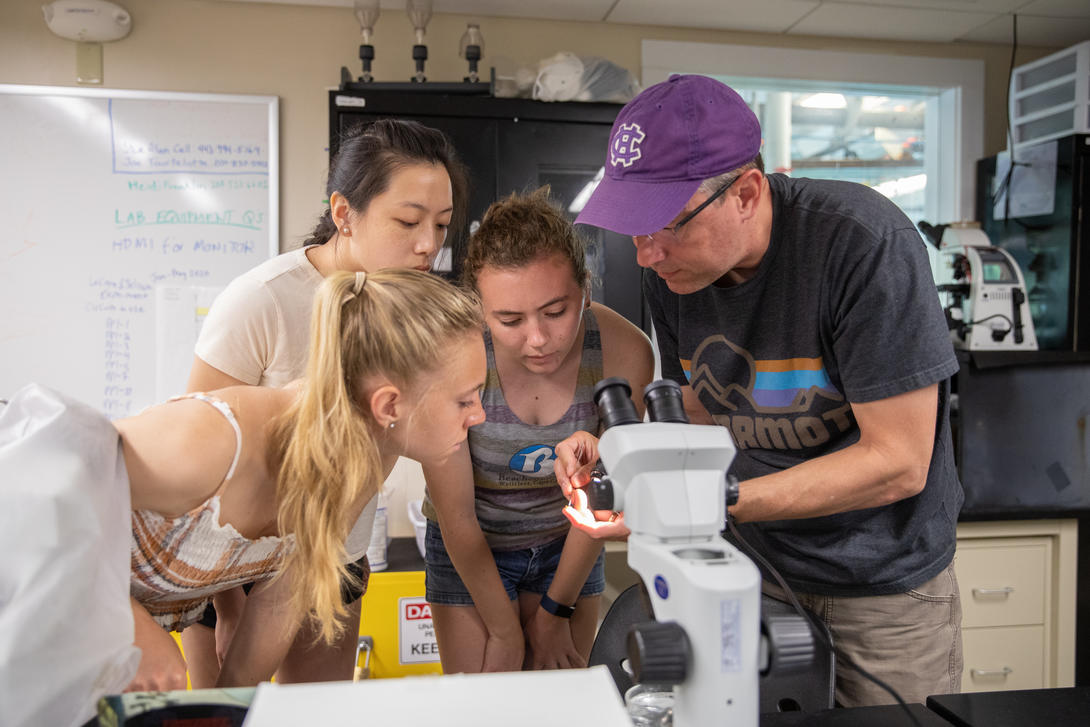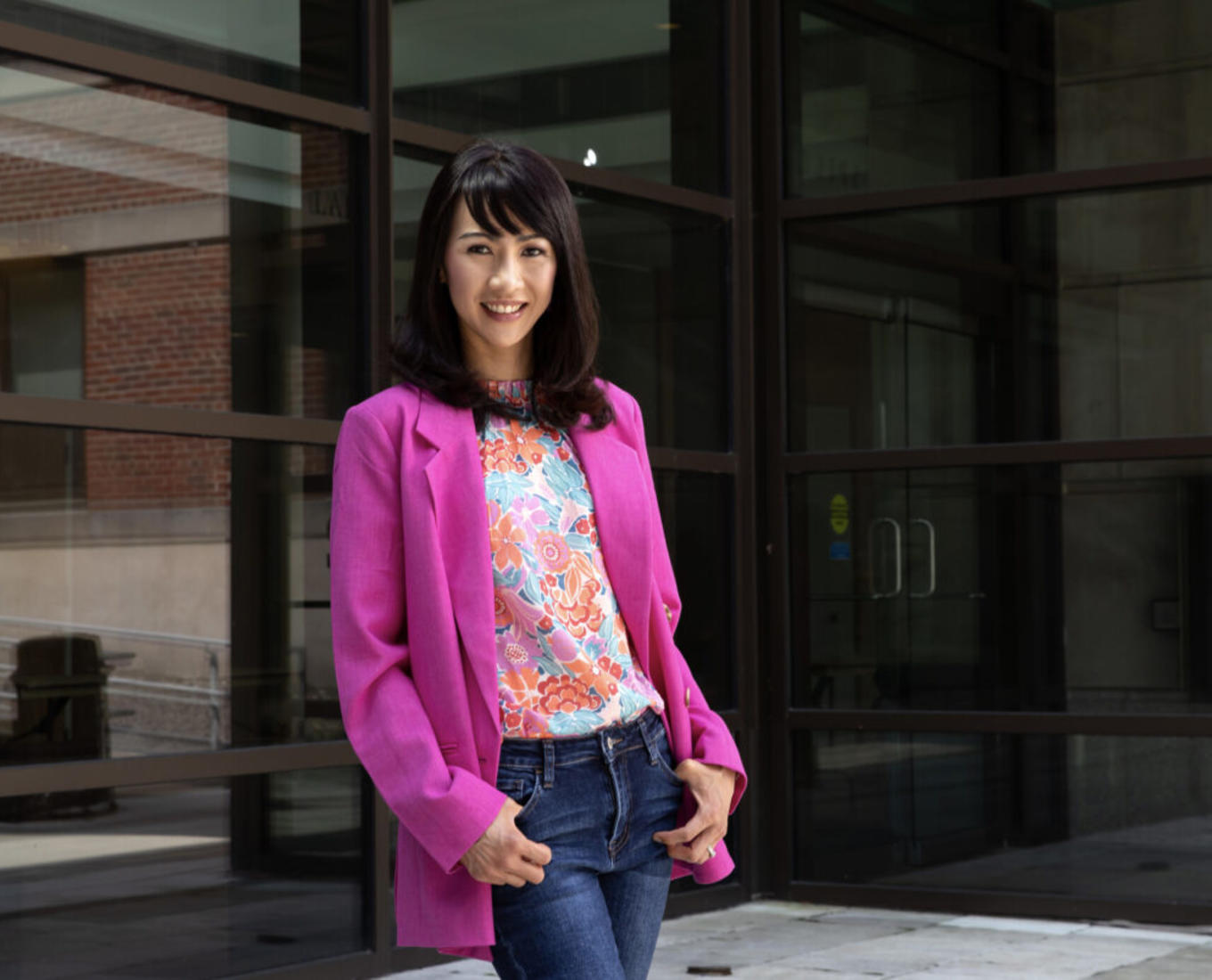As a child peering into a large bucket of seawater filled with tiny fish and squid, Justin McAlister was mesmerized by the creatures’ scales glistening in the Bermudian sunlight.
“It was magical, like little treasures sitting in a bucket. I was fascinated,” said McAlister, associate professor of biology and part of the new department of environmental studies.
McAlister grew up in Ohio and spent his summers in Bermuda with his grandfather, a hobbyist fisherman, helping to collect bait by using a special technique that involved a dinghy, a twist and twirl of the net before tossing it over the water, slapping the surface with an oar and scooping up what they could capture.
While McAlister enjoyed his time fishing with his grandfather, he was more interested in the creatures that they collected. “They looked so different from everything on land. I point to that time as being the thing that really got me interested in doing something with marine life,” he said.
Coral in New England? Yes, And It’s Rugged
Justin McAlister, associate professor of biology, spends his summers in the water off Maine and Bermuda searching for answers to how marine invertebrates and their microscopic larvae survive and thrive.
Read Time
In May, McAlister and Kelly Wolfe-Bellin, senior lecturer and director of biology laboratories, led a team of students from various academic disciplines to Bermuda to investigate and consider how societies and communities manage energy, water, food, waste management, nature, conservation, and environmental changes.
“The students had to think about the decisions or tradeoffs that needed to be made about how resources would be generated and used. Those decisions might be different on a small island like Bermuda than what they would be coming from a big country like the U.S.,” he noted.
As a researcher, McAlister studies how natural and man-made environmental changes impact the biology and life history decisions made by organisms. Specifically, what these changes mean for marine invertebrates and their larvae, including classic sea creatures like cnidarians (corals, sea anemones and jellyfish) and echinoderms (sea urchins, sea stars and brittle stars).
When thinking about what is more important in controlling how an organism develops and grows, “it used to be a battle between nature versus nurture,” he said. “It’s actually both things together that lead to the development of the organism. That's true for humans just as much as it is true for every other organism.”
While conducting doctoral research in Panama, he focused on species of echinoderms that lived in the Pacific Ocean and had cousins thriving in the Caribbean, separated only by about 50 miles of land and three million years of marine evolution. They experienced different food sources, water temperatures and predators, and had to make tradeoffs in order to survive: lay more and smaller eggs in the Pacific or fewer and larger more robust eggs in the Caribbean in order to thrive in their different marine environments. McAlister researched how the invisible-to-the-naked-eye larvae adapted to the changes.
“When I talk to people about sea stars they have this mental image of an adult sea star. That’s not what the babies look like. They look like aliens, are microscopic and more sensitive [to environmental change] than the adults, and float around in the ocean water [instead of crawling along the seafloor]. Nobody's thinking about them, except for the few of us that do,” McAlister said.
That is until there is a marine catastrophe, like warming oceans or a pollution event. “It’s the babies that are often killed off or most affected,” McAlister said.
Recently, he has worked with students examining the effects of exposure to tire dust emitted from vehicle wheels that gets into watersheds and then, ultimately, is distributed to the coast. “Tire dust is a toxic stew of chemicals and in the Pacific Northwest there is one particular chemical that is increasing the mortality of coho salmon,” he said.
On the East Coast, he is studying the northern star coral, Astrangia poculata, found in New England waters: “We typically think of corals in warm water but, yes, we have coral in New England.” Unlike coral found in warm water, New England’s resident coral is rugged and perplexing. The cold-water coral survives in two seemingly opposing conditions: one is brown and full of photosynthetic algae and the other is white with very low numbers of algae.
“As a biologist, it is not usual to see something where evolution has favored these two extremes [living side-by-side in the same location],” McAlister said. During the winter, the northern coral might shed the algae, appearing whiter, while during the summer it might pick them up again, turning brown.
“We're kind of in this weird place in the world in New England where we get harsh winters and really cold water, but then in the summer we get really warm conditions. It’s not constant enough to push the entire population towards being completely brown or completely white,” he said.
Yet, in what seems to be the case of several marine case studies, the change in water temperature may be affecting the corals’ habitat and range. McAlister said he is not certain what effect the ocean warming could have on the coral: “I think we’re going to see changes in the populations, but we don’t know what those might be.”
What scientists do know is that the range of this specific species of coral could expand into the Gulf of Maine. Historically, Cape Cod has acted as the biogeographical barrier for the species, marking the area between one region that stretches south to Cape Hatteras in North Carolina and another that ranges north to Nova Scotia, Canada.
As a way to try to predict what will happen, McAlister and his students bring small sample sizes of coral back to his lab, induce the coral to spawn, fertilize the eggs and then raise the larvae in what he calls a nursery under different types of environmental conditions. They also test the adults under similar conditions to understand how the full life cycle of the animal may be impacted. Investigating the tradeoffs that marine organisms must make in response to changing ocean environments helps his students to understand their own life tradeoffs.


